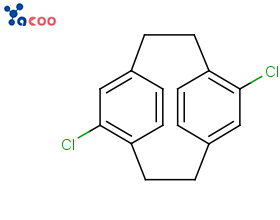2024-01-26
Product Name:Parylene C
CAS:10366-05-9
Molecular Formula:C16H14Cl2
Article No.:E0016
Structural Formula:

Product Introduction
Parylene C is mainly used as a high-purity passivation layer and dielectric layer in microelectronics and semiconductors. It can also be used as passivation, protection, lubrication and other coatings in microelectronics; In addition, it can also be used as isolation, solidification, and reinforcement materials in biomedical anti-corrosion and cultural relic protection.
Application of Parylene C
Electrowetting lenses mainly use the principle of electrowetting effect on the medium to control the wetting characteristics of the liquid on the surface of the medium by changing the applied voltage, thereby achieving the same zoom ability as the human lens. Compared with traditional mechanical lenses, electrowetting lenses have advantages such as simple structure, light weight, low cost, fast zoom, and good imaging effects. They have great potential for application in mobile phones, cameras, scanners, and other fields. However, due to the material properties and structural limitations of the dielectric layer in existing electrowetting lenses, problems such as dielectric failure are prone to occur. This results in a generally short service life of electrowetting lenses, which limits their stability and durability in various optical systems. Therefore, how to extend the service life of electrowetting lenses is a technical problem that needs to be solved.Given the existing technical issues, the CN117389027A patent provides a dielectric layer and an electrowetting lens for use in electrowetting. The dielectric layer of an electrowetting lens includes an inorganic dielectric thin film and an organic dielectric thin film;
Inorganic dielectric thin films are at least one of strontium barium titanate thin films, silicon dioxide thin films, alumina thin films, and tantalum oxide thin films;
Organic dielectric thin films are at least one of Parylene C thin films, polyimide thin films, or photoresist thin films.
Among them, the Parylene C thin film is prepared by vacuum vapor deposition method, which specifically includes the following steps:
(1) Place the solid dichloro-p-xylene dimer raw material in the evaporation chamber and sublimate it at 100-160 ℃ to produce dichloro-p-xylene dimer gas;
(2) Inject the gas of dichloro-p-xylene dimer into the cracking chamber and generate active 2-chlorop-xylene monomer molecules at 600-720 ℃;
(3) Inject the monomer molecules of 2-chloro-p-xylene into a vacuum deposition chamber at room temperature, and polymerize and deposit the Perrin C film on the substrate surface.
By combining two or several organic dielectric films with different barrier properties with inorganic dielectric films, the diffusion path of ion permeation is extended using the composite system, resulting in a high barrier performance of the prepared dielectric layer. This avoids possible erosion problems caused by ion permeation and improves the service life of the electrowetting lens.
References
CN117389027A A dielectric layer and electrowetting lens for electrowetting.
Copyright © Suzhou Yacoo Science Co., Ltd. All Rights Reserved
Friendly Links :
online service